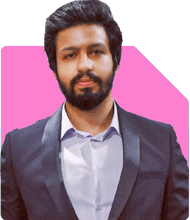27-Year-Old Earning 1 Lakh Monthly: Am I Investing Enough?
Ramalingam Kalirajan |9854 Answers |Ask -Follow
Mutual Funds, Financial Planning Expert - Answered on Oct 15, 2024
He has an MBA in finance from the University of Madras and is a certified financial planner.
He is the director and chief financial planner at Holistic Investment, a Chennai-based firm that offers financial planning and wealth management advice.... more

Hi sir , I have a monthly salary of 1L per month,Iam 27 years old. I want to understand whether iam over investing or under investing as i already secured with health insurance for self and parents and term life for myself. With addition to pf , I started ppf and nps both 5k each and mutual funds with 8k per month. My pf monthly deduction is around 6k.
Let’s take a comprehensive look at your current financial scenario and provide insights into whether your investments are aligned with your future needs.
Investment Overview and Breakdown
Based on the information you've provided, here's a summary of your current investments:
Provident Fund (PF): Rs. 6,000 per month
Public Provident Fund (PPF): Rs. 5,000 per month
National Pension System (NPS): Rs. 5,000 per month
Mutual Funds: Rs. 8,000 per month
Total Monthly Investments: Rs. 24,000
You’re currently investing 24% of your monthly income (Rs. 1 lakh) into these schemes. This is a solid saving percentage, particularly for your age. Typically, financial planners recommend saving at least 20-30% of your income, so you're within a good range.
However, let's dig deeper to see if you are over-investing or under-investing based on your goals, expenses, and risk profile.
Evaluating Your Current Investment Mix
1. Provident Fund (PF):
Your PF deduction is Rs. 6,000 per month, which helps in building a solid retirement corpus. It also offers tax benefits under Section 80C.
Insight: PF is a safe and long-term wealth-building tool. Since it’s mandatory and part of your salary structure, it continues without requiring active management from you.
2. Public Provident Fund (PPF):
You are investing Rs. 5,000 per month in PPF. This is another excellent long-term investment vehicle with a lock-in of 15 years.
Insight: PPF offers tax-free returns and is considered a very safe investment. However, its liquidity is limited due to the long lock-in period, which may restrict your access to funds in case of emergencies.
3. National Pension System (NPS):
You’ve also committed Rs. 5,000 per month to NPS, which is a pension scheme that helps build a retirement corpus with some equity exposure.
Insight: NPS is a good addition to your retirement plan, as it offers market-linked returns with tax benefits. However, keep in mind that a portion of your retirement corpus will be locked in for purchasing annuities upon maturity.
4. Mutual Funds:
Your investment in mutual funds is Rs. 8,000 per month. Since this is market-linked, it adds an element of growth to your portfolio.
Insight: Mutual funds can help you build wealth over the long term, especially if you diversify into different types like large-cap, mid-cap, and small-cap funds. Actively managed mutual funds provide you with opportunities to outperform the market when handled by a Certified Financial Planner through regular funds. Avoid index funds and direct funds, as they limit active management advantages.
Assessing Your Risk Profile and Investment Allocation
Since you're 27 years old, you have a high risk-taking ability. Younger investors can typically afford to allocate more funds toward equity-based investments to maximize long-term growth.
Equity Exposure: Your mutual fund investments (Rs. 8,000 per month) provide equity exposure, but it only constitutes 33% of your total monthly investment. You may want to consider increasing this allocation, especially since equities have the potential for higher returns in the long run.
Debt Exposure: Your investments in PF, PPF, and NPS are all relatively safe debt instruments. They offer stability and security but are generally lower in returns compared to equity.
Balancing Your Investments: Are You Over or Under-Investing?
1. Over-Investing or Under-Investing?
You are currently investing Rs. 24,000 per month, which is 24% of your income. This is a healthy saving rate. You are not over-investing, as you are balancing both equity and debt instruments.
The key question is whether you have sufficient funds left for your monthly expenses and lifestyle needs. Ensure that your day-to-day expenses, emergency fund, and any upcoming goals (such as travel or buying a car) are also considered.
2. Emergency Fund:
While you’ve made smart investments, it’s equally important to have an emergency fund. This fund should cover 6-12 months of your expenses. Based on your salary, aim to have around Rs. 2-3 lakh in liquid assets like a savings account or liquid mutual funds. If you haven't started this yet, it’s advisable to set aside some money for emergencies.
3. Long-Term Goals:
It’s important to clarify your long-term financial goals. Whether it’s buying a home, planning for marriage, or retirement, these goals will determine whether your current investment mix is appropriate.
For Retirement: Your PF, PPF, and NPS will contribute toward your retirement, but you should ensure your equity investments (through mutual funds) grow as well.
Other Goals: For mid-term goals (5-10 years), such as buying a house or car, ensure you are not overly invested in long-term lock-in schemes like PPF and NPS. Keep some flexibility in your portfolio.
Is Your Investment Mix Optimal?
Your current investments are well-diversified between safe, government-backed schemes like PPF and NPS, and market-linked instruments like mutual funds. However, there are a few areas where adjustments may be beneficial.
1. Increase Equity Exposure:
Since you are 27, consider allocating more funds to equity-based mutual funds. You could increase your mutual fund SIPs from Rs. 8,000 to Rs. 12,000 or even Rs. 15,000. This will give your portfolio a better growth potential over the long term.
2. Tax Planning:
You’re already maximizing Section 80C benefits with your PF, PPF, and NPS contributions. If needed, you can increase your NPS contribution to take advantage of Section 80CCD(1B), which provides an additional Rs. 50,000 tax deduction.
3. Avoid Direct Funds and Index Funds:
As mentioned earlier, direct funds limit the advantage of professional management. Investing through a Certified Financial Planner (CFP) in regular funds gives you access to expert insights and active management. This can lead to better long-term returns.
Index funds, while low cost, tend to mirror the market. Actively managed funds, on the other hand, offer the potential to outperform the market and should be preferred for long-term growth.
Final Insights
At 27, you’re on the right track with your investments. You are neither over-investing nor under-investing. Your current savings rate is commendable, but there’s room to adjust your portfolio to maximize returns.
Increase Equity Exposure: Consider increasing your mutual fund SIPs to give your portfolio more growth potential.
Maintain an Emergency Fund: Ensure you have liquidity to cover 6-12 months of expenses for emergencies.
Tax Efficiency: Review your NPS contributions to maximize tax benefits under Section 80CCD(1B).
Avoid Index Funds and Direct Funds: Focus on actively managed funds through a trusted Certified Financial Planner for better performance.
By making these adjustments, you’ll build a more robust, well-balanced portfolio that supports your long-term financial goals.
Best Regards,
K. Ramalingam, MBA, CFP,
Chief Financial Planner,
www.holisticinvestment.in
https://www.youtube.com/@HolisticInvestment
You may like to see similar questions and answers below
Sanjeev Govila | Answer |Ask -Follow
Financial Planner - Answered on Feb 06, 2024
Ramalingam Kalirajan |9854 Answers |Ask -Follow
Mutual Funds, Financial Planning Expert - Answered on Jun 18, 2024
Ramalingam Kalirajan |9854 Answers |Ask -Follow
Mutual Funds, Financial Planning Expert - Answered on Aug 13, 2024
Patrick Dsouza |1336 Answers |Ask -Follow
CAT, XAT, CMAT, CET Expert - Answered on Jul 27, 2025
Patrick Dsouza |1336 Answers |Ask -Follow
CAT, XAT, CMAT, CET Expert - Answered on Jul 27, 2025
Nayagam P P |9494 Answers |Ask -Follow
Career Counsellor - Answered on Jul 27, 2025
Nayagam P P |9494 Answers |Ask -Follow
Career Counsellor - Answered on Jul 27, 2025
Nayagam P P |9494 Answers |Ask -Follow
Career Counsellor - Answered on Jul 27, 2025
Nayagam P P |9494 Answers |Ask -Follow
Career Counsellor - Answered on Jul 27, 2025
Nayagam P P |9494 Answers |Ask -Follow
Career Counsellor - Answered on Jul 27, 2025
Nayagam P P |9494 Answers |Ask -Follow
Career Counsellor - Answered on Jul 27, 2025
Nayagam P P |9494 Answers |Ask -Follow
Career Counsellor - Answered on Jul 27, 2025
Mohit Arora |71 Answers |Ask -Follow
Dating Coach - Answered on Jul 27, 2025




















